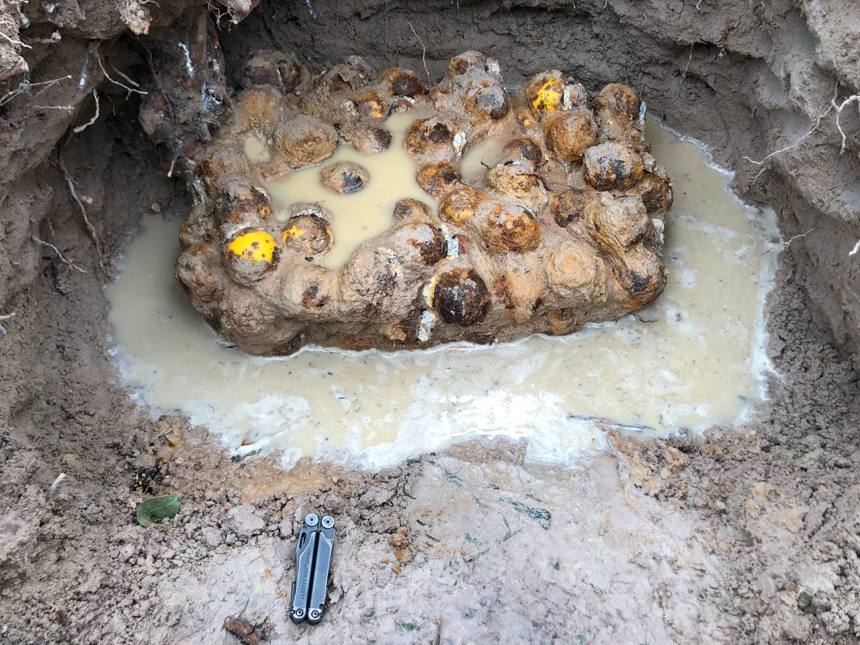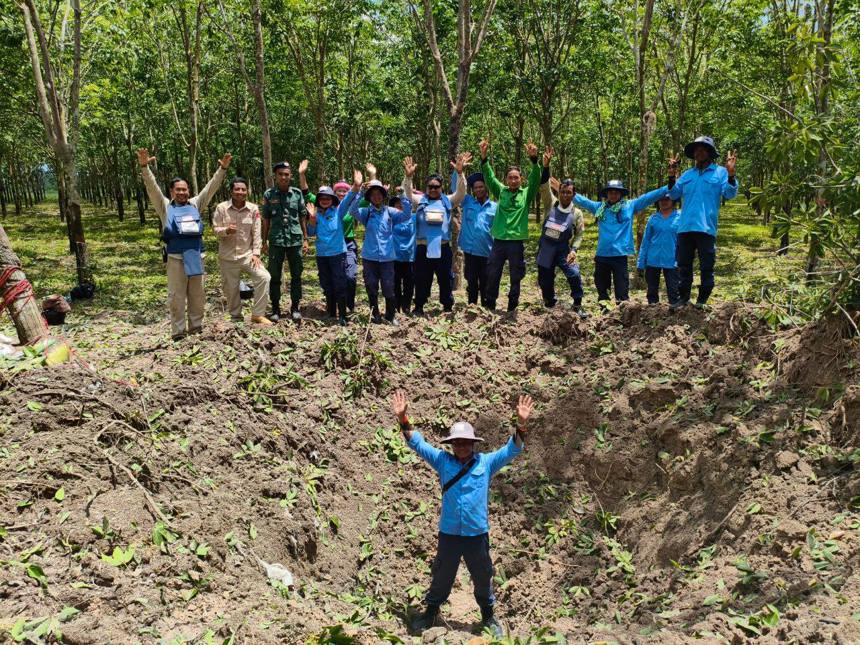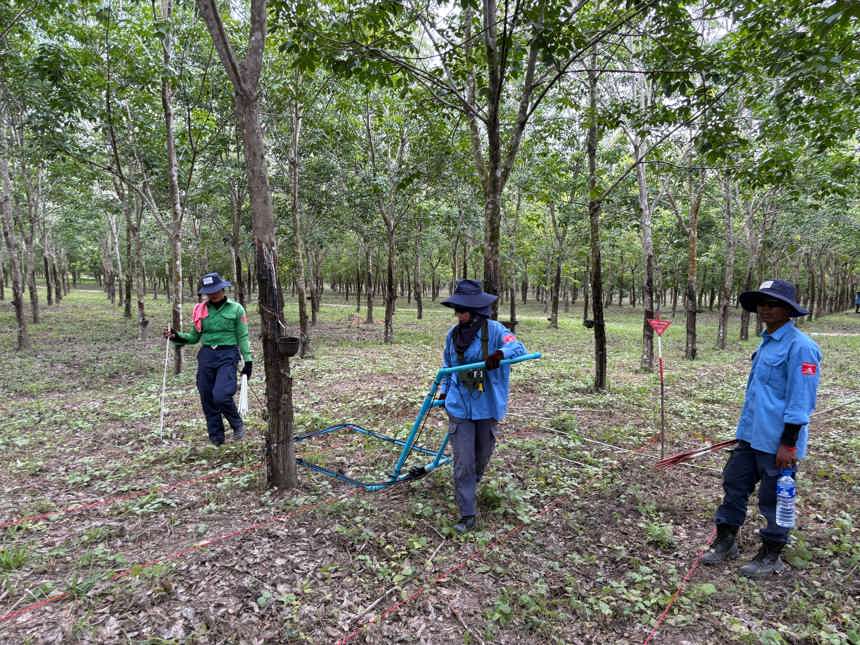On August 20th, a HALO clearance team working in Andoung Lngieng village, located in Cambodia’s eastern Tboung Khmum Province, made a significant discovery. Hidden beneath a rubber plantation, they uncovered a single pit containing 80 BLU-24 cluster bombs – deadly remnants of a conflict that ended more than half a century ago.

BLU-24 cluster munitions uncovered in a Tboung Khmum rubber plantation by a United States-funded HALO Trust clearance team.Yul Hai (left) sits on a patch of cleared land while the rest is cleared with neighbor Cham Sophal.
Decades-Old Dangers Still Threaten Communities
These cluster bombs are part of the enduring legacy of the intense aerial bombing campaigns carried out by the United States in Cambodia between 1965 and 1973. During that time, over 2.7 million tons of explosive ordnance were dropped across the eastern provinces, targeting North Vietnamese and Khmer Rouge forces. Among the most destructive were cluster munitions, designed to disperse dozens, sometimes thousands, of smaller bomblets over wide areas. An estimated 26 million of these submunitions were dropped over communities like Andoung Lngieng in Tboung Khmum Province.
A somber chapter that should belong to the past remains a daily threat. Many cluster munitions failed to detonate on impact and now lie hidden and waiting in rice paddies, forests, riverbeds, and villages, still capable of exploding decades later. To this day, farmers risk everything to cultivate their land. Children unknowingly play in contaminated schoolyards. Villagers collecting firewood or foraging in forests face danger with every step.
Cluster munitions are responsible for the majority of unexploded ordnance (UXO)-related accidents in Cambodia today. Their hidden threat also restricts access to land that individuals and communities depend on for their livelihoods, denying them safety, stability, and opportunity. As population growth increases pressure on available land, more Cambodians are forced through economic necessity to live and work in hazardous areas, further increasing the risk.
A Partnership for Progress: HALO and the United States
While the discovery in Tboung Khmum Province is a grim reminder of the enduring dangers, it also marks a hopeful milestone: with support from the United States, HALO has expanded operations to clear cluster munition contamination in eastern Cambodia. This vital work is possible thanks to United States funding and long-standing commitment to Cambodia’s mine action and recovery from conflict.
With United States support, HALO is clearing cluster munitions across five of Cambodia’s most heavily impacted provinces: Kampong Cham, Kampong Thom, Stung Treng, Kratie, and Tboung Khmum. Using declassified U.S. military records, HALO has been able to target clearance where it is needed most. Together, these provinces account for nearly half (47%) of Cambodia’s remaining cluster munition contamination, an estimated 5.5 million submunitions.


Restoring Safety and Hope for Future Generations
There is much work to be done. On this single rubber plantation in Tboung Khmum, HALO has already located and destroyed 100 cluster bombs - with clearance still ongoing. But the true measure of progress goes far beyond the number of items removed. It is seen in lives protected, fear replaced with hope, and land returned to communities for safe and productive use.
With American leadership and the tireless dedication of HALO’s clearance teams, Cambodia is moving closer to a future where the next generation can grow up free from the dangers of a war fought decades ago.
HALO's life-saving work in Cambodia is made possible through generous funding from the United States.


